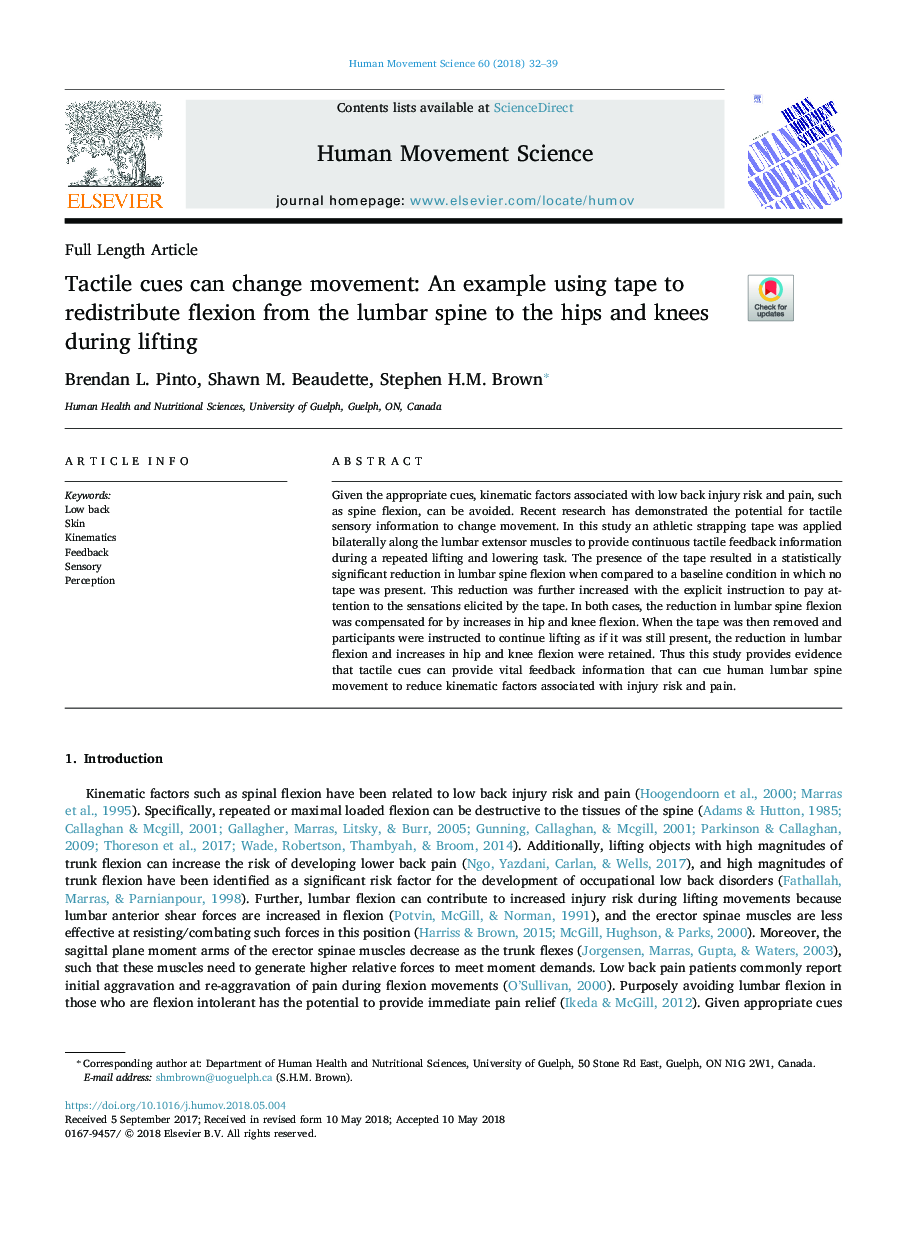| Article ID | Journal | Published Year | Pages | File Type |
|---|---|---|---|---|
| 7290762 | Human Movement Science | 2018 | 8 Pages |
Abstract
Given the appropriate cues, kinematic factors associated with low back injury risk and pain, such as spine flexion, can be avoided. Recent research has demonstrated the potential for tactile sensory information to change movement. In this study an athletic strapping tape was applied bilaterally along the lumbar extensor muscles to provide continuous tactile feedback information during a repeated lifting and lowering task. The presence of the tape resulted in a statistically significant reduction in lumbar spine flexion when compared to a baseline condition in which no tape was present. This reduction was further increased with the explicit instruction to pay attention to the sensations elicited by the tape. In both cases, the reduction in lumbar spine flexion was compensated for by increases in hip and knee flexion. When the tape was then removed and participants were instructed to continue lifting as if it was still present, the reduction in lumbar flexion and increases in hip and knee flexion were retained. Thus this study provides evidence that tactile cues can provide vital feedback information that can cue human lumbar spine movement to reduce kinematic factors associated with injury risk and pain.
Related Topics
Life Sciences
Neuroscience
Cognitive Neuroscience
Authors
Brendan L. Pinto, Shawn M. Beaudette, Stephen H.M. Brown,
